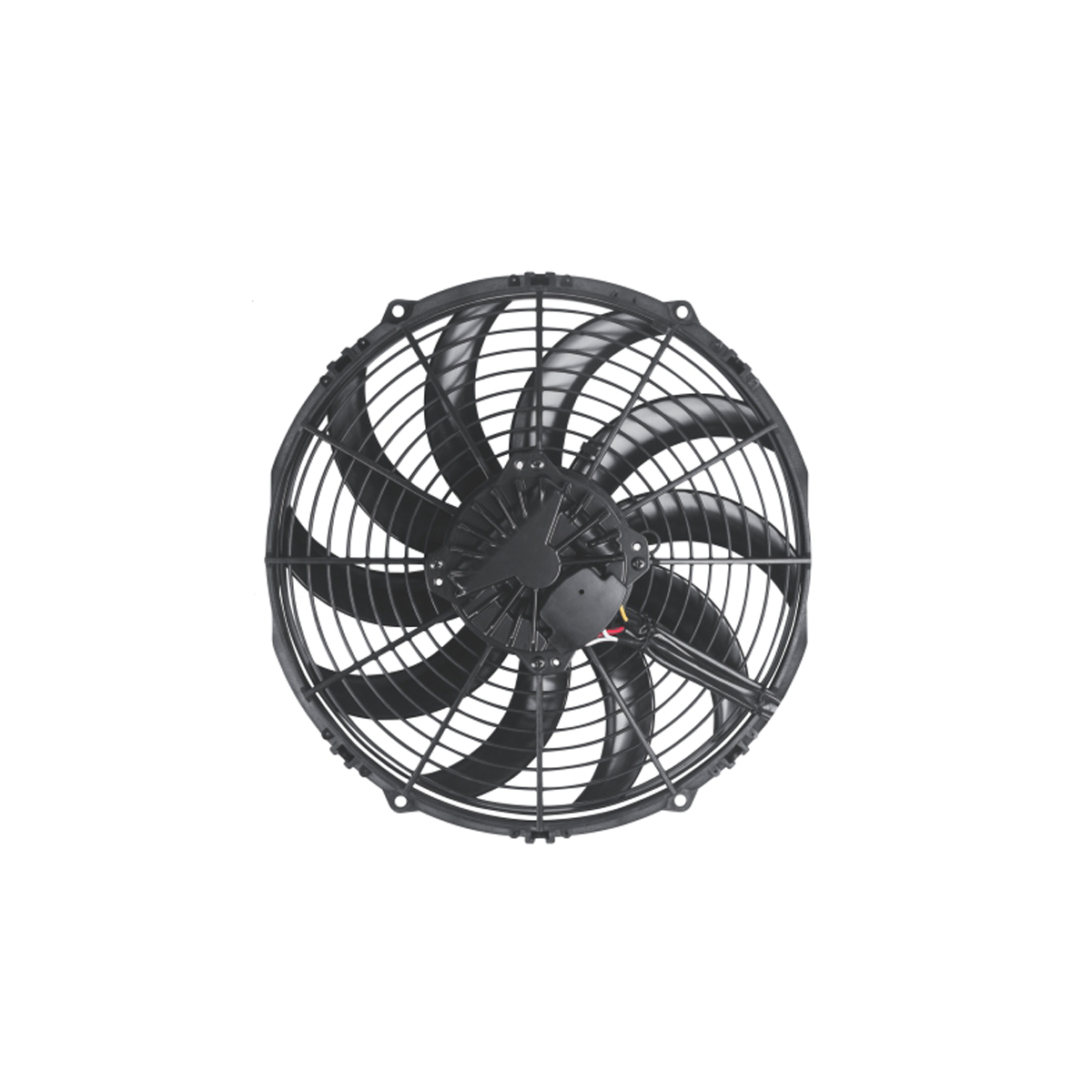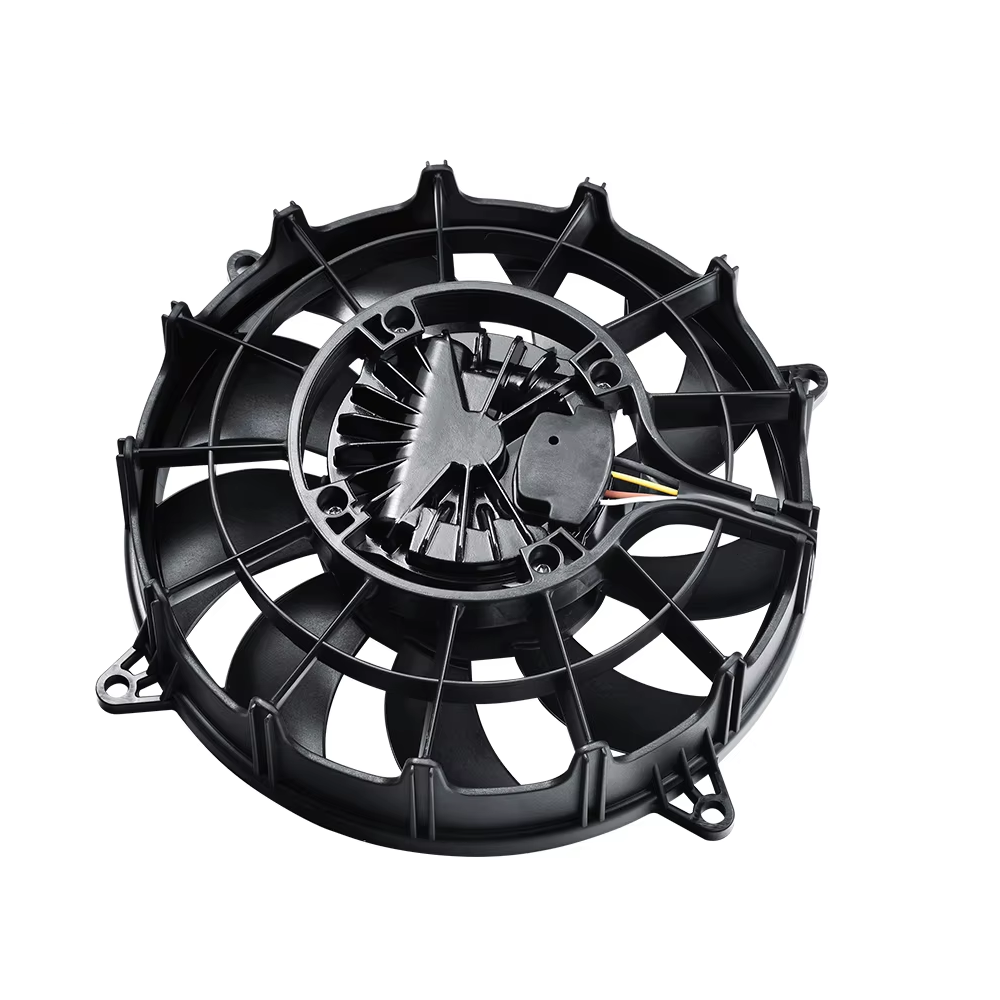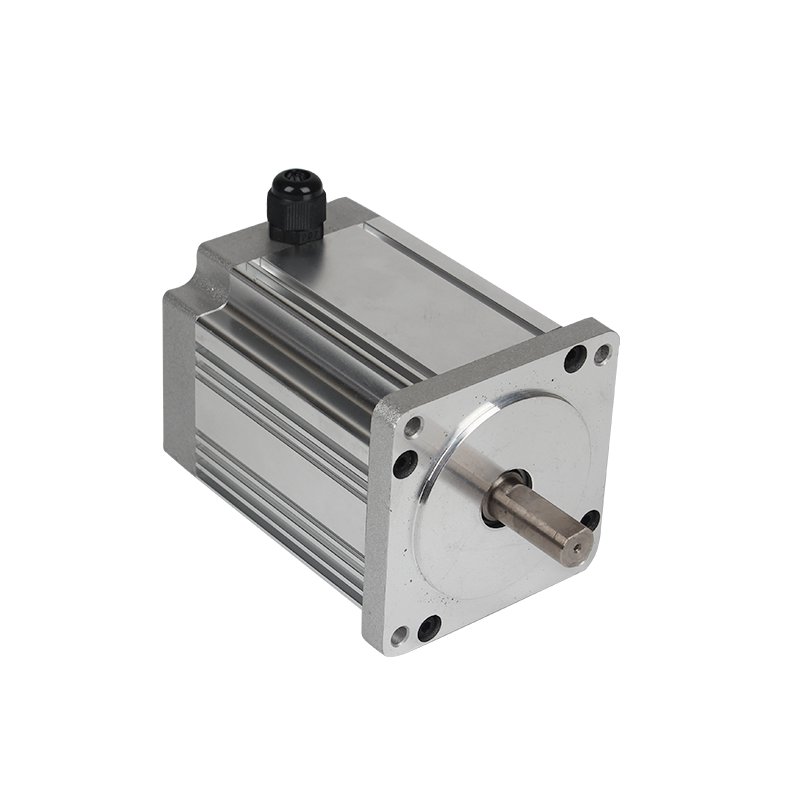Imagine a world where your cooling systems run like a well-oiled machine, consuming less energy while delivering peak performance. 🌟 It’s not a fantasy; it’s the reality that optimized axial fan design can bring to your operations. From understanding the fundamental principles to leveraging cutting-edge technologies, there’s a whole universe of possibilities waiting to be explored.
In this comprehensive guide, we’ll dive deep into the art and science of axial fan optimization. We’ll uncover the crucial design parameters that can make or break performance, explore customization options for specific applications, and reveal how advanced technologies are reshaping the landscape. Get ready to discover how you can maximize energy efficiency, ensure longevity, and stay compliant with industry standards – all while keeping your cool. 😎 Let’s embark on this journey to transform your cooling and ventilation systems, starting with the basics of axial fan fundamentals.
Understanding Axial Fan Fundamentals
Key components of axial fans
Axial fans consist of several crucial components that work together to move air efficiently:
-
Impeller (Rotor)
-
Hub
-
Blades
-
Motor
-
Housing (Casing)
-
Inlet and Outlet
Here’s a breakdown of these components and their functions:
| Component | Function |
|---|---|
| Impeller | Rotates to generate airflow |
| Hub | Connects blades to the motor shaft |
| Blades | Push air in the axial direction |
| Motor | Provides power to rotate the impeller |
| Housing | Guides airflow and protects internal parts |
| Inlet/Outlet | Allow air to enter and exit the fan |
How axial fans work
Axial fans operate on a simple yet effective principle:
-
The motor rotates the impeller
-
Blades push air parallel to the shaft
-
Air moves from the inlet to the outlet
-
Pressure difference creates airflow
This design allows for high volume airflow with relatively low pressure, making axial fans ideal for many applications.
Advantages over other fan types
Axial fans offer several benefits compared to centrifugal and mixed-flow fans:
-
Higher efficiency in low-pressure applications
-
Compact design for space-constrained areas
-
Lower initial costs
-
Easier installation and maintenance
-
Better suited for reversible airflow
Common applications in HVAC, cooling towers, and industrial ventilation
Axial fans are widely used in various industries due to their versatility:
-
HVAC systems: Air circulation in large spaces
-
Cooling towers: Heat rejection in power plants
-
Industrial ventilation: Exhaust systems in factories
-
Computer cooling: Small-scale fans in electronic devices
-
Wind tunnels: Aerodynamic testing facilities
Their ability to move large volumes of air makes them indispensable in these applications. As we explore design parameters, we’ll see how these fundamentals influence fan performance and efficiency.
Crucial Design Parameters for Optimal Performance
Blade geometry and aerodynamics
The blade geometry and aerodynamics of axial fans play a crucial role in their performance. Optimizing these parameters can significantly enhance efficiency and reduce energy consumption. Here are key factors to consider:
-
Airfoil shape
-
Blade angle
-
Number of blades
-
Blade sweep
| Factor | Impact on Performance |
|---|---|
| Airfoil shape | Determines lift and drag characteristics |
| Blade angle | Affects air flow and pressure |
| Number of blades | Influences noise levels and efficiency |
| Blade sweep | Reduces noise and improves performance |
Hub-to-tip ratio optimization
The hub-to-tip ratio is a critical design parameter that affects the fan’s overall performance. A well-optimized ratio can lead to:
-
Improved air flow distribution
-
Reduced energy consumption
-
Enhanced stability
Motor selection and power efficiency
Selecting the right motor is essential for maximizing power efficiency. Consider the following factors:
-
Motor type (AC, DC, or EC)
-
Speed control capabilities
-
Power rating
-
Efficiency class (IE3, IE4, etc.)
Noise reduction techniques
Implementing effective noise reduction techniques is crucial for many applications. Some strategies include:
-
Using serrated trailing edges
-
Optimizing blade spacing
-
Incorporating sound-absorbing materials
-
Designing low-noise blade profiles
Materials selection for durability
Choosing the right materials can significantly impact the fan’s durability and performance. Consider these options:
-
Aluminum alloys for lightweight and corrosion resistance
-
Stainless steel for high-temperature applications
-
Composite materials for strength and weight reduction
-
Specialized coatings for harsh environments
By carefully considering these design parameters, engineers can create axial fans that meet specific performance requirements while maximizing efficiency and longevity. Next, we’ll explore how to customize axial fans for specific applications, building upon these fundamental design principles.
Customizing Axial Fans for Specific Applications
HVAC system requirements
When customizing axial fans for HVAC systems, several key factors must be considered to ensure optimal performance:
-
Airflow capacity
-
Static pressure
-
Energy efficiency
-
Noise levels
-
Space constraints
To meet these requirements, designers must carefully select fan blade profiles, motor types, and control systems. The following table illustrates the typical specifications for different HVAC applications:
| Aplicativo | Airflow (CFM) | Static Pressure (in. wg) | Noise Level (dBA) |
|---|---|---|---|
| Residential | 800 – 2,000 | 0.5 – 1.0 | 35 – 45 |
| Commercial | 2,000 – 10,000 | 1.0 – 2.5 | 45 – 55 |
| Industrial | 10,000+ | 2.5 – 5.0 | 55 – 65 |
Cooling tower performance considerations
Axial fans in cooling towers face unique challenges due to the humid environment and the need for high airflow rates. Key considerations include:
-
Corrosion-resistant materials (e.g., fiberglass-reinforced plastic)
-
Large diameter designs for increased airflow
-
Variable speed drives for energy efficiency
-
Low-noise blade designs
Industrial ventilation challenges
Industrial ventilation systems often require axial fans capable of handling:
-
High-temperature exhaust gases
-
Particulate-laden air
-
Corrosive environments
-
Explosive atmospheres
To address these challenges, designers may incorporate features such as:
-
High-strength alloy construction
-
Specialized coatings for corrosion resistance
-
Spark-resistant designs for explosive environments
-
Custom blade geometries for specific airflow patterns
Adapting designs for extreme environments
Axial fans used in extreme environments, such as offshore platforms or arctic installations, require special considerations:
-
Temperature extremes (-40°C to +60°C)
-
High humidity and salt spray exposure
-
Vibration and shock resistance
-
Remote monitoring and control capabilities
Designers must employ advanced materials, robust sealing systems, and intelligent control algorithms to ensure reliable operation in these demanding conditions. As we explore further, we’ll delve into the advanced technologies that enable these specialized axial fan designs to meet the diverse needs of modern industries.
Advanced Technologies in Axial Fan Design
Computational Fluid Dynamics (CFD) simulations
Computational Fluid Dynamics (CFD) has revolutionized axial fan design, allowing engineers to simulate and optimize fan performance with unprecedented accuracy. CFD simulations provide detailed insights into airflow patterns, pressure distributions, and heat transfer within the fan system.
Key benefits of CFD in axial fan design:
-
Reduced prototyping costs
-
Faster design iterations
-
Improved efficiency and performance
-
Better understanding of complex flow phenomena
| CFD Simulation Aspect | Impact on Axial Fan Design |
|---|---|
| Airflow visualization | Optimizes blade geometry |
| Pressure mapping | Enhances overall system efficiency |
| Thermal analysis | Improves cooling performance |
| Noise prediction | Reduces acoustic emissions |
3D printing for prototype development
3D printing technology has transformed the prototyping process for axial fans, enabling rapid iteration and testing of innovative designs. This additive manufacturing technique allows for:
-
Quick production of complex geometries
-
Cost-effective small-batch production
-
Easy customization and design modifications
-
Reduced time-to-market for new fan models
Smart sensors for performance monitoring
The integration of smart sensors in axial fans has opened new possibilities for real-time performance monitoring and predictive maintenance. These sensors can:
-
Track rotational speed and vibration levels
-
Monitor temperature and humidity conditions
-
Detect imbalances or misalignments
-
Provide early warning for potential failures
Variable speed drives for energy savings
Variable speed drives (VSDs) have become a game-changer in axial fan energy efficiency. By allowing fans to operate at optimal speeds based on demand, VSDs offer:
-
Significant energy savings (up to 50% in some cases)
-
Improved system control and flexibility
-
Reduced wear and tear on fan components
-
Enhanced overall system performance
As we move forward, these advanced technologies continue to push the boundaries of axial fan design, resulting in more efficient, reliable, and adaptable solutions for various applications.
Maximizing Energy Efficiency
High-efficiency motor integration
Integrating high-efficiency motors into axial fan designs is crucial for maximizing energy efficiency. These motors, such as electronically commutated (EC) motors and permanent magnet synchronous motors (PMSM), offer significant advantages over traditional induction motors.
| Motor Type | Efficiency | Speed Control | Maintenance |
|---|---|---|---|
| EC Motor | 90-95% | Excellent | Low |
| PMSM | 95-98% | Excellent | Low |
| Induction | 80-85% | Good | Moderate |
Benefits of high-efficiency motors in axial fans:
-
Reduced energy consumption
-
Lower operating costs
-
Improved speed control
-
Quieter operation
-
Extended lifespan
Optimizing fan curves for specific operating points
To maximize energy efficiency, it’s essential to optimize fan curves for specific operating points. This involves:
-
Analyzing system requirements
-
Selecting the appropriate fan size and blade design
-
Adjusting pitch angles for optimal performance
-
Implementing variable speed drives (VSDs)
By tailoring the fan curve to match the system’s needs, you can significantly reduce energy waste and improve overall efficiency.
Implementing system-level efficiency improvements
Enhancing energy efficiency goes beyond the fan itself. Consider these system-level improvements:
-
Streamlining ductwork to reduce pressure losses
-
Using aerodynamic inlet and outlet designs
-
Implementing smart control systems for demand-based operation
-
Regular maintenance and cleaning to prevent efficiency degradation
Energy recovery options in ventilation systems
Incorporating energy recovery options can further boost system efficiency. Heat recovery ventilators (HRVs) and energy recovery ventilators (ERVs) can recapture up to 80% of the energy from exhaust air, significantly reducing HVAC energy consumption.
Now that we’ve explored ways to maximize energy efficiency in axial fan systems, let’s move on to discuss maintenance and longevity considerations to ensure these efficient systems continue to perform optimally over time.
Maintenance and Longevity Considerations
Predictive maintenance strategies
Implementing predictive maintenance strategies is crucial for maximizing the lifespan and efficiency of axial fans. By utilizing advanced monitoring techniques, operators can anticipate potential issues before they escalate into costly breakdowns. Here are some key strategies:
-
Vibration analysis
-
Thermal imaging
-
Oil analysis
-
Acoustic monitoring
| Strategy | Benefits | Implementation |
|---|---|---|
| Vibration analysis | Early detection of bearing failures | Install vibration sensors |
| Thermal imaging | Identify hot spots and electrical issues | Use infrared cameras |
| Oil analysis | Detect wear particles and contamination | Regular oil sampling |
| Acoustic monitoring | Detect unusual noises indicating problems | Install acoustic sensors |
Corrosion resistance techniques
Protecting axial fans from corrosion is essential, especially in harsh environments. Several techniques can be employed to enhance corrosion resistance:
-
Application of protective coatings
-
Use of corrosion-resistant materials
-
Cathodic protection systems
-
Regular cleaning and inspection
Balancing for reduced vibration and wear
Proper balancing of axial fans is critical for minimizing vibration and wear. This process involves:
-
Static balancing
-
Dynamic balancing
-
Field balancing
Regular balancing checks and adjustments can significantly extend the fan’s operational life and maintain optimal performance.
Easy-to-service design features
Incorporating easy-to-service design features can greatly simplify maintenance tasks and reduce downtime. Key features include:
-
Modular components for quick replacement
-
Accessible lubrication points
-
Removable fan blades for easy cleaning
-
Clear labeling and documentation
Now that we’ve covered maintenance and longevity considerations, let’s explore the importance of regulatory compliance and industry standards in axial fan design and operation.
Regulatory Compliance and Industry Standards
Energy efficiency regulations
Energy efficiency regulations play a crucial role in axial fan design for HVAC, cooling towers, and industrial ventilation systems. These regulations aim to reduce energy consumption and promote sustainable practices across industries. Manufacturers must adhere to specific standards to ensure their products meet or exceed minimum efficiency requirements.
| Regulation | Description | Impact on Axial Fan Design |
|---|---|---|
| ErP Directive | European Union’s energy-related products directive | Mandates minimum efficiency grades for fans |
| AMCA 210-16 | Air Movement and Control Association’s testing standard | Establishes procedures for performance testing |
| ASHRAE 90.1 | Energy Standard for Buildings | Sets fan efficiency requirements for HVAC systems |
To comply with these regulations, designers must focus on:
-
Optimizing blade geometry
-
Improving motor efficiency
-
Implementing variable speed drives
-
Enhancing aerodynamic performance
Noise level requirements
Noise pollution is a significant concern in many applications, leading to strict noise level requirements for axial fans. Designers must balance performance with acoustic considerations to meet these standards:
-
OSHA workplace noise exposure limits
-
Local environmental noise regulations
-
Industry-specific sound level guidelines
Strategies for noise reduction in axial fan design include:
-
Using advanced blade profiles
-
Incorporating sound-absorbing materials
-
Optimizing fan speed and air flow
-
Implementing active noise control systems
Safety standards for industrial applications
Industrial axial fans must adhere to rigorous safety standards to ensure workplace safety and equipment reliability. Key safety considerations include:
| Safety Aspect | Relevant Standards | Design Implications |
|---|---|---|
| Mechanical integrity | ISO 14694, AMCA 204 | Vibration limits, balance quality |
| Electrical safety | IEC 60034, UL 507 | Insulation class, protection ratings |
| Explosion protection | ATEX Directive, IECEx | Spark-resistant materials, sealed designs |
Environmental impact considerations
Axial fan designers must also address environmental concerns beyond energy efficiency. This includes:
-
Material selection for recyclability
-
Reduction of harmful emissions during manufacturing
-
Minimizing the use of hazardous substances (e.g., RoHS compliance)
-
Life cycle assessment to optimize overall environmental impact
By addressing these regulatory and industry standards, axial fan designers can create products that are not only high-performing but also compliant, safe, and environmentally responsible.
Axial fan design optimization is a critical factor in enhancing the performance and efficiency of HVAC systems, cooling towers, and industrial ventilation. By focusing on key design parameters, customizing fans for specific applications, and leveraging advanced technologies, engineers can create highly effective and energy-efficient solutions. The integration of smart materials, computational fluid dynamics, and innovative blade designs has revolutionized the field, pushing the boundaries of what’s possible in axial fan performance.
As the industry continues to evolve, prioritizing energy efficiency, maintenance considerations, and regulatory compliance will be crucial for success. By implementing the strategies and best practices discussed in this post, professionals can develop axial fan designs that not only meet current standards but also pave the way for future advancements in the field. Ultimately, optimizing axial fan design is an ongoing process that requires a holistic approach, balancing performance, efficiency, and longevity to create sustainable and effective solutions for various industrial applications.




